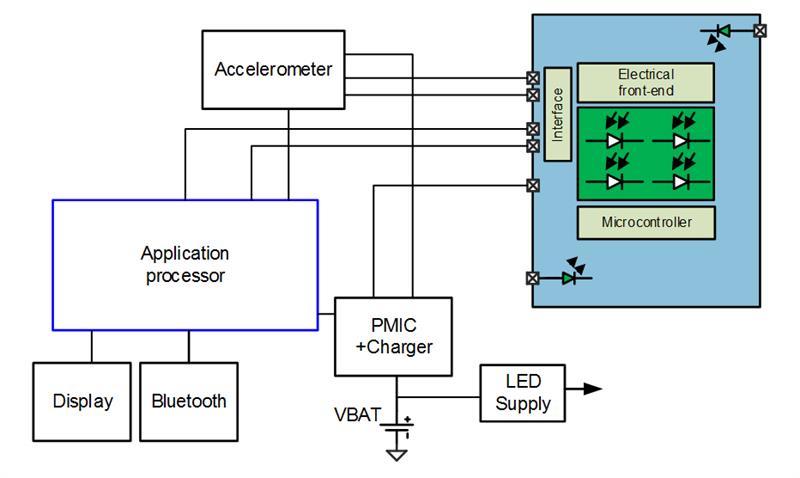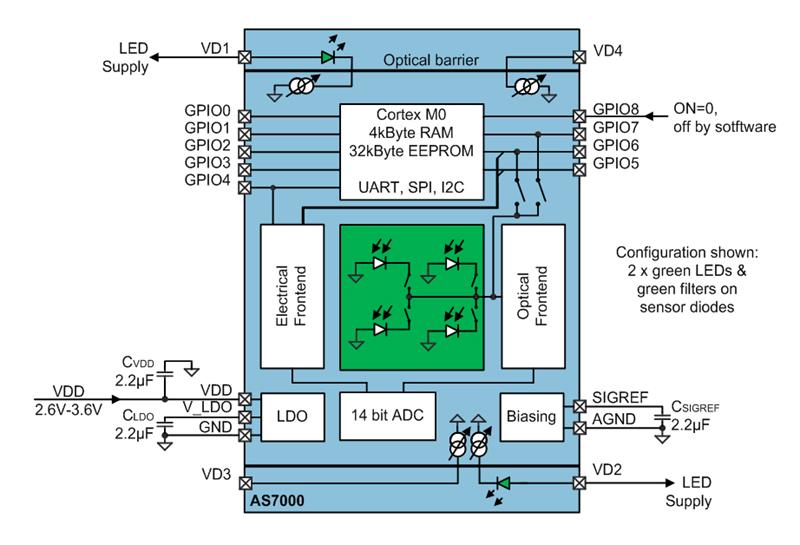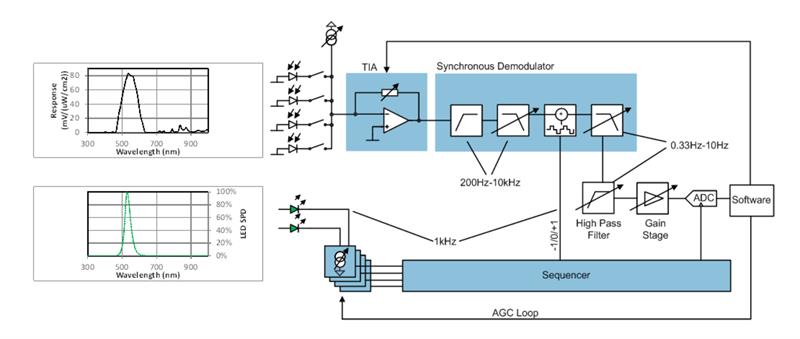The importance of this physiological indicator has led the electronics industry into a bout of innovation and experimentation: it is trying to contrive a reliable means to implement continuous heart rate measurement into a comfortable wearable device that can interface to a smartphone or computer, in order to provide the wearer with useful information about their health, lifestyle and activity.
As this article will show, technologies for heart rate measurement (HRM) and heart rate variation monitoring (HRV) are well understood and proven in many applications. But implementing the technology in a wearable form factor calls for an application-specific combination of precision analogue circuitry, filtering components and software.
How to measure heart rate with light
The traditional method for monitoring heart rate is to measure the spikes of electricity generated in the heart at each pressure pulse – the so called electrocardiogram, or ECG. A portable ECG device is worn on a chest band that holds it centred over the heart. It may transfer its readings wirelessly to a host computer.
Unfortunately, the chest band is uncomfortable when worn for extended periods. It has a role to play in medical and exercise settings, but it is not a viable option for continuous use. For users who want to take constant heart measurements as part of their health and lifestyle monitoring, a wearable form factor such as a wristband or smart watch is required.
Clearly the ECG is ineligible for use in a wristband. And in fact, an alternative is already widely used by medical professionals for heart rate measurement and pulse oximetry. An optical measurement method, photoplesmythography (PPG), measures the change in the volume of blood as it distends the arteries and arterioles in the subcutaneous tissue.
In a medical setting, this is normally implemented in the form of a finger clip which the user slides over the top of a finger. The device points a beam of light into the skin (from an LED on one side of the device) and measures changes in light transmission through the finger (at a photodiode on the other side of the device). The amount of light detected at the photosensor briefly falls sharply at each pulse, as the increased volume of blood absorbs more of the light. The signal from the photodiode is a saw tooth-like curve (see Figure 1), the base frequency of which corresponds with the heart rate.
Fig. 1: the characteristic saw tooth shape of the curve from a PPG heart rate monitor |
For medical use, PPG in transmission mode is the preferred method. But this transmission mode constrains the mechanical design of the device: it has to cover part of the body, in practice normally a finger or earlobe. This is uncomfortable and inconvenient to wear for more than a few minutes.
Fortunately, PPG also works in reflection mode: the amount of light reflected back in the direction of the LED light source is also reduced by the absorption effect at each pulse. This enables the implementation of an HRM, HRV and pulse oximetry device sitting on the surface of the skin – for instance in a wristband.
Difficulties with wristband implementations
But this reflection-mode PPG itself creates numerous problems for the designer to solve in order to achieve continuous and reliable heart rate measurement. The device’s operation can be compromised by:
•movement of the body – for instance, gesturing or exercise involving the use of the arms – affecting the circulation of blood in the blood vessels at the wrist
•ambient light
•cross-talk between the device’s LED and its photo-sensors
•movement of the wearable device on the surface of the skin
The design is particularly challenging because most of the LED’s light is reflected from body tissue, rather than the blood vessels (see Figure 2). These other body parts are not subject to as much fluctuation in absorption rate. This means that the variation caused by the pulsing of the heart is represented by a tiny AC signal on top of a large DC base signal. Detection of this AC signal calls for highly sensitive analogue circuitry with a wide dynamic range.
It also means that distortion caused by body movements and by the shifting of the device on the surface of the skin would make the measurement results inaccurate, unless the device cancelled out their effect through the application of a compensation algorithm. The system therefore needs an accelerometer to provide three-axis motion data as the input to the compensation algorithm.
|
Of course, the wristband’s movement on the surface of the skin can be minimised if the band fits tightly, but it must at the same time be loose enough to be comfortable. A tight fit also helps to block the path of ambient light to the photodiode, although a narrow wristband can let ambient light penetrate through the surface of the skin as far as the sensor.
Therefore, in order to achieve high reliability and accuracy, a wristband-mounted PPG device may implement a number of methods for ambient light cancellation:
•optical narrow-band filters
•optical signal modulation
•automatic gain control
•filtering of the electrical signal
An optical barrier between the LEDs and the detector can reduce the risk of cross-talk. This may also be achieved through modification of the board package: bumps on tops of the detectors and LEDs improve light penetration to the tissue and direct it more effectively into the body.
So much for the mechanical design considerations: what about the electronics?
Main functional blocks of a wristband-mounted PPG device
The basic elements of a PPG system mounted on a wristband are shown in Figure 3. The application processor manages system functions, communications and the display. A Bluetooth Low Energy (Bluetooth Smart) modem provides a short-range wireless link to a host computer such as a smartphone.
The actual PPG measurement system could be implemented with discrete LEDs, photodiodes and signal processing circuitry, while the application’s algorithms may run on a host processor. Such a discrete implementation, however, would require the development team to optimise all the elements of the device, including:
•the number of LEDs and their spacing
•the light output of the LEDs – its power and colour
•the number of photodiodes and their spacing
•the provision of optical barriers and filters
•the timing of the LEDs’ operation, and the implementation of the control interfaces to them and to the photodiodes
Fig. 3: block diagram of a PPG wristband device |
Advantages of integrated solutions
An integrated module containing all the required functional blocks, with PPG-specific optimisations and software, eliminates the requirement to solve any of these implementation problems. The AS7000, a sensor system-on-chip from ams, provides such an integrated solution for wristband PPG in a single module measuring 4 x 6 x 1mm. It includes LEDs, photo-detectors, optical processing circuitry and an analogue front end (see Figure 4).
It also contains a low power ARM Cortex-M0 processor core that runs ams’ algorithms to calculate and deliver the actual heart rate figure (in beats/minute), and also to measure the intervals between peaks (in milliseconds) for applications related to heart rate variability. The extremely versatile and flexible analogue front end of the AS7000 can also be programmed to optimise the PPG signal quality to enable calculation of additional vital signs such as respiration rate, blood oxygenation and even blood pressure-related parameters.
As the diverse market for wearable devices includes products with (such as smart watches) and without (such as simple wristbands) a powerful host controller, the AS7000 has been designed to either run the HRM algorithm on board or to work with the system’s application processor. The IC offers appropriate interfaces and sufficient memory for algorithm processing and housekeeping functions, and thus provides designers with flexibility in integrating it into the other parts of a product design.
Figure 3 shows the AS7000 using a dedicated accelerometer for compensation of motion artefacts. It can, however, instead use data from an accelerometer shared by the rest of the system, as long as the data can be provided at exact intervals.
As this article has shown, the mechanical design of the optical system has a large impact on its performance. This is why the AS7000 IC is supplied as part of a total solution that incorporates HRM, HRV and pulse oximetry algorithms optimised for the hardware features of the module as well as unique opto-mechanical support during the design-in phase. This means that it can be dropped into a product design without any significant integration effort or software development. It can equally be used as a front end only, controlling the measurement process and providing raw optical data to the host application processor.
Fig. 4: block diagram of the AS7000 for a heart rate application, using two green LEDs |
ams uses two methods for eliminating the impact of ambient light on the measurement results. One is the provision of optical filters and barriers. In addition, the controller modulates the operation of LEDs at an adjustable frequency, typically 1kHz. A synchronous demodulator multiplies the signal by ±1, its timing synchronised with the LED modulation frequency, enabling it to subtract the ambient light portion of the total measured light, leaving only the reflected LED light value for further processing.
In order to synchronise the LED current, the integration time and the ADC’s sampling time, a built-in sampling sequencer may be used (see Figure 5). The sequencer generates 16-bit timings based on a 1µs clock and synchronises the LEDs’ modulation and demodulation, and the analogue-to-digital conversion. The results are automatically stored in a pipeline buffer or in an ADC data register.
Fig. 5: an in-built sequencer controls the timing of the LEDs’ operation and the synchronous demodulator |
The analogue circuitry in the AS7000, then, provides a stream of filtered, amplified measurements of reflected light. The proprietary ams algorithm produces an accurate and reliable heart-rate reading from just 20 data samples per second. The data received from the accelerometer are fed to the algorithm at regular intervals, so that it can detect and compensate for motion artefacts.
It should be noted that the firmware can be updated via serial wire debug or I2C interfaces. This allows different algorithms to be used in different applications while still taking advantage of the AS7000’s optical sensing capabilities.
The end result of using the AS7000 system-on-chip is the effective reading of vital sign data based on PPG measurements of blood flow. The AS7000 uses proven methods for:
•inserting light beneath the skin
•measuring the reflections accurately without distortions caused by ambient light, body movements or cross-talk
•converting these measurements into accurate HRM, HRV and blood oxygen readings.
All of this may be achieved with the use of discrete LEDs, photodiodes and signal chain components, but this would require much more design time and risk than the use of a compact, low-power, proven sensor solution-on-a-chip.
Summary
Medical and exercise professionals are today able to make use of devices for measuring blood flow and heart rate. But these devices are intended for occasional, short-term use; they are not comfortable or convenient enough to be worn permanently.
Nevertheless, the heart rate is a highly revealing physiological indicator: monitored continuously, it can shed light on a person’s fitness, activity, lifestyle, health and even sleep quality. This has led the electronics industry to try to contrive a means to implement continuous heart rate measurement and monitoring of heart rate variation in a wearable – that is, comfortable – device that can interface to a smartphone or computer, in order to provide the wearer with useful information about their health, lifestyle and activity.
As this article shows, technologies for heart rate measurement are well understood and proven in many applications. But implementing a suitable technology, PPG, in a wearable form factor – a wristband – calls for an application-specific combination of precision analogue circuitry, filtering components and software.
The design must also handle several potential causes of interference and distortion, including ambient light, cross-talk and motion artefacts. Now a sensor solution-on-a-chip, the AS7000, provides a ready-made hardware and software implementation of PPG for use in a wristband form factor, and its architecture and operation are described in this article.








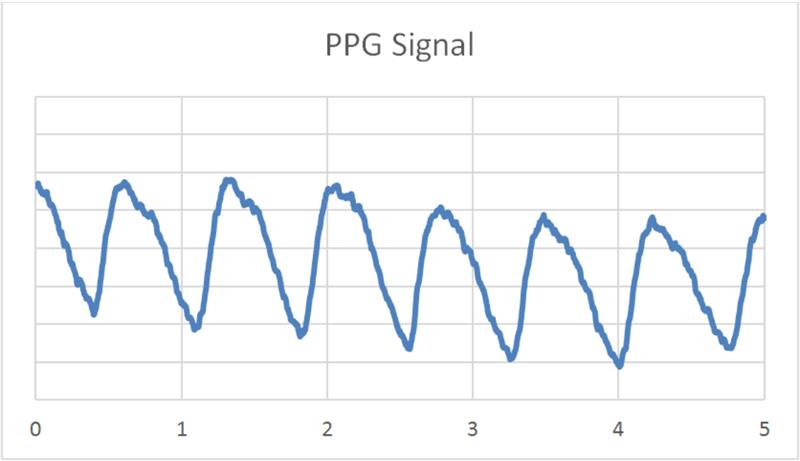
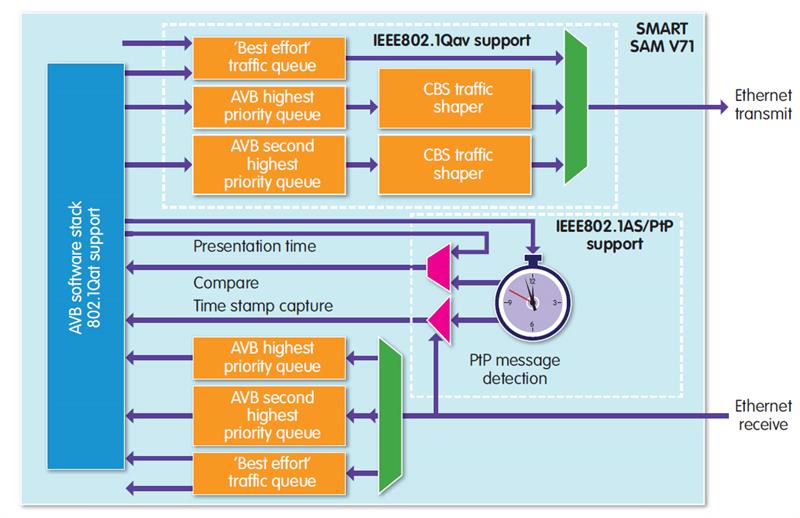 Fig. 2: typical placement of a PPG sensor on the wrist
Fig. 2: typical placement of a PPG sensor on the wrist